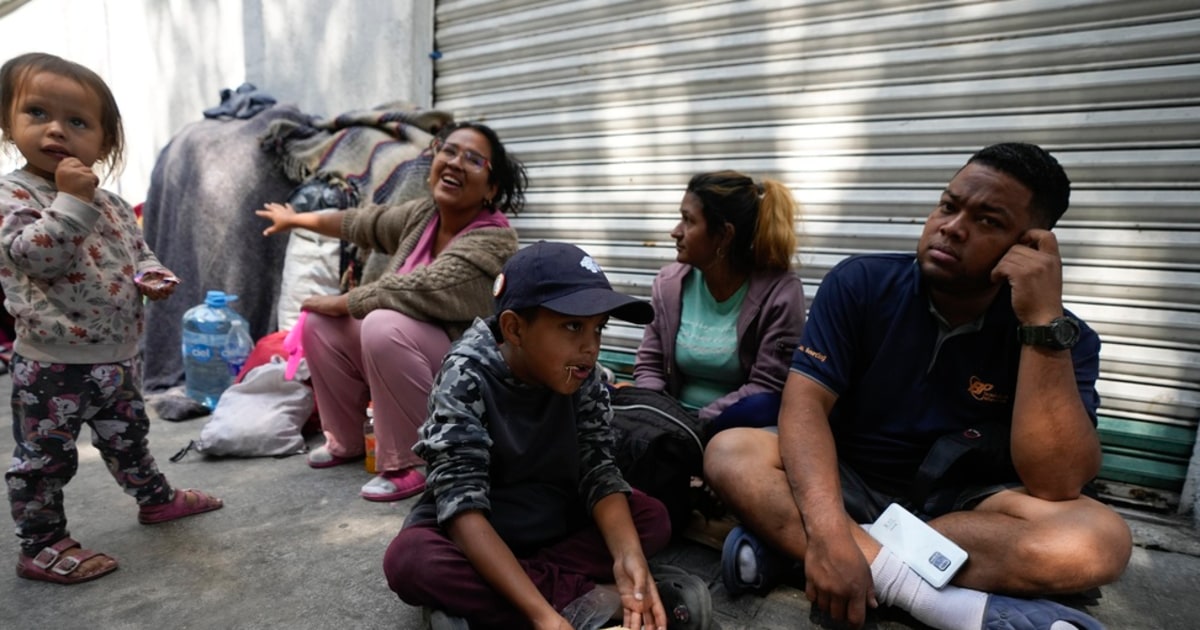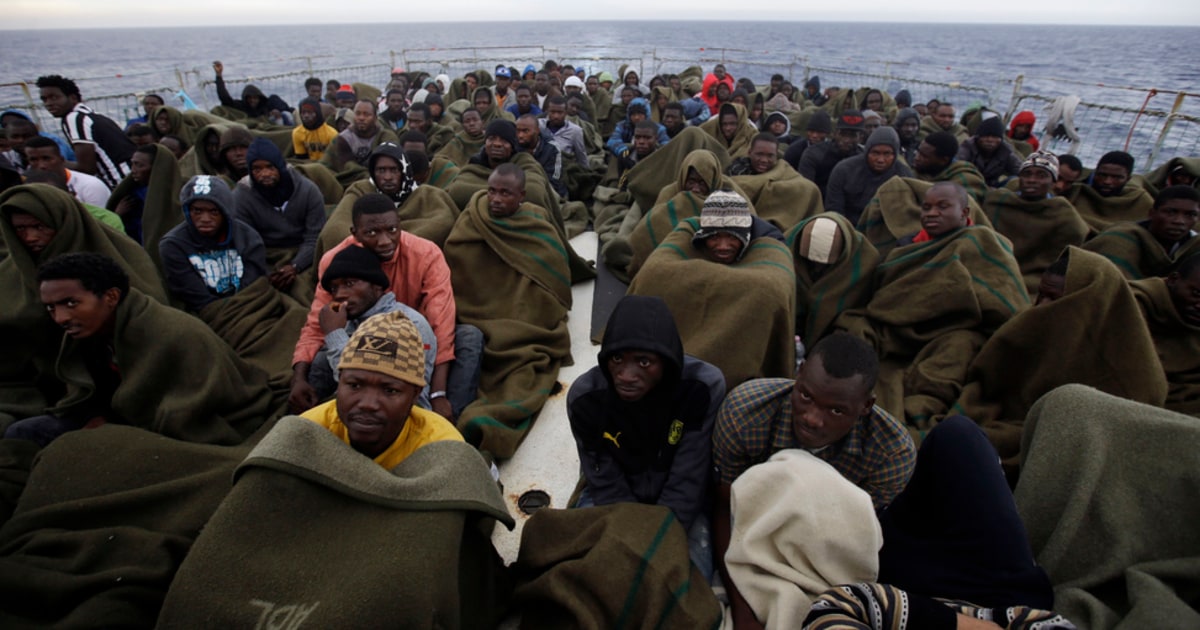BAJA CALIFORNIA, Mexico — Tony Garcia says he knows the Pacific Ocean like the back of his hand because he has been a fisherman since he was 12 years old.
While other children only went to school and played soccer, he woke up at dawn and helped his relatives who went into the high seas to catch various species of marine fauna such as snapper, sole, grouper or croaker.
"You do know how to run when there is bad weather, because of the swells, you have to take everything calmly. Don't rush, or do things on the run because you can do it wrong and a mistake is sometimes fatal," he says serenely.
But, for a few years now, García and other veteran sailors from Ensenada, Baja California, are no longer just fishing.
They are recruited by criminal human trafficking networks to transport migrants in speedboats
and other small boats that depart from the country's coasts to the United States.
"Sometimes you get caught by winds, storms, and you have to take care of the people you are carrying, they go crouched, with vests, and you look tough... it's open sea. You see a frigate [of the US Coast Guard . or the Mexican Navy], you see a light and you have to retreat very far. You open up 100, 150 miles inward. And there you go, until you reach land. Around 12 at night, 1 in the morning, you have to be arriving and taking people down", explains the fisherman about his nocturnal escapades.
"They promised to take them to the US": on the trail of the coyotes operating in the Caribbean
May 29, 202104:00
Although the fishing boats that are normally used in that area are only designed to transport six people, García details that at first it carried 15 to 20 migrants but has crossed up to 28 or 30 passengers in the fragile boats with which it sails the night seas
[There is concern about the increase in deaths of migrants who try to cross by sea. “The ocean does not forgive”, warns an agent]
"When you are overweight, the engines break down, you drift and that's when they grab you (...) On the way back you come empty and along the shore, the road is already shorter," warns the man, who asked to keep his anonymity because he was recently imprisoned for almost a year in the United States for illegally transporting migrants to that country.
García looks at the abyssal depths of the ocean without hesitation, as if they were the paths of the park closest to his house.
The sea, his other home, has always welcomed him in the midst of the dangers he navigates armed with only a GPS, a phone and a compass.
In case all else fails, he says that he can always look to the stars to get his bearings.
An immigrant dies trying to cross the border wall into the US
May 31, 202200:46
"They caught me like taking candy from a child because my engine broke down when I got there. I had seven miles to go before it broke down and I already looked at drones, a frigate, and the coast guard. I turned off the engines and got them up and I already waited for that they come for me. There I said: 'It's all over, the family is over, there was nothing' (...) Since I had 25 people, because of the amount they couldn't give me six or eight months. They told me it was 13 months and one day, but they took two months off for good behavior," he says with relief.
More and more activity at sea
In fiscal year 2021, the Coast Guard detected
some 14,500 episodes in which migrants tried to enter or successfully reached the United States,
both in the Atlantic and Pacific oceans.
This figure is almost double the 7,600 recorded in fiscal year 2020, but both the Coast Guard and other authorities (including the United States Customs and Border Protection and foreign navies) only made 5,000 interceptions of people. migrants.
Despite the notable increase in the flow of people who transit the maritime routes to reach the United States, a recent study by the Migration Policy Institute shows that the proportion of intercepted migrants detected
decreased from 77% registered in fiscal year 2020 to a 47% in 2021.
According to the researchers, the marked decrease in the interceptions of migratory contingents on the high seas responds to multiple factors such as the stagnation in government investment for interdiction missions in US territorial waters, which has remained stable with allocations of 1.2 billion dollars since 2018, without larger increments.
Tony García was imprisoned for almost a year for transporting migrants illegally to US territory.Noticias Telemundo
In addition, the study notes that in the first seven months of fiscal year 2022, the Coast Guard intercepted more Haitians at sea than during any fiscal year since 1994. Nearly 2,000 Cubans at sea have also been recorded intercepted in the same period, more than any fiscal year since 2016, which shows the increase in migratory transit from the Caribbean.
According to the most recent data, the Mexican Secretary of the Navy has rescued 1,204 migrants on the high seas since 2018. In January, the agency said that
from August 2010 to October 2021 it had intercepted 4,798 migrants
who were shipwrecked in national waters.
"Historically in the north of Mexico, the trend is the land crossing, which is still the highest percentage. But there are also trips by sea, both
through the beaches of Tijuana to go to San Diego where people even cross with
jet skis
or swimming
, which is very dangerous because many times they drown. And, in the case of Baja California, towns like San Felipe and others have routes to get to California that were previously only used for drug trafficking, but now they also transport people," says José María Ramos, an academic at El Colegio de la Frontera Norte.
They have routes to get to California that were previously only used for drug trafficking, but now they also transport people"
José María Ramos, Mexican academic
The increase in the number of migrants passing through Mexico is a fact that causes alarm among researchers and authorities.
According to the International Organization for Migration (IOM), the annual flow of irregular migrants that passes through the country annually is around 400,000 people but it is seen as a tentative figure because, in 2021 alone, more than 600,000 migrants arrived at the northern border.
"This is a very important corridor for both drug trafficking and migrants (...) organized crime has its networks, manages its quotas and its corruption processes by land, air and sea. Unfortunately, for traffickers it is a big deal because, according to the World Bank,
the transfer of Mexican migrants alone by human traffickers amounts to 1,648 million dollars
, "explains Ramos.
García, the fisherman from Baja California, affirms that he has never met his "patrons", they usually notify him a few hours before setting sail and he is not present during the preparations with the migrants.
A Cuban migrant who made the crossing on a windsurf board is rescued 15 miles from Florida
March 26, 202200:25
"You get to the shore, and the people are already there because they take them in other cars. They have everything full of gasoline and you just get there, you get on, and let's go. Before leaving you have to check the weather, where the wind, the waves and how big they are going to be, to calculate what time you are going to get there, because you have to get back before dawn," he explains.
The sailor agrees with the figures handled by various international organizations that estimate that the transfer of migrants by sea is one of the most expensive methods that exist to cross into the United States because, on average,
the person must pay between 15 and 17,000 dollars or more.
Garcia has $1,000 left per passenger.
[This is how coyotes outwit the Border Patrol and this is what they charge for a sometimes deadly trip]
"You can earn about 12 or 13,000 per trip, in two rounds it's 26 or 27,000 dollars (...) but it's not much either, because of the risk. You can lose everything, fall in jail. Then you know what you're going for," he asserts. .
By comparison, fishermen in the area earn an average salary of $685 a month, which explains why many continue to traffic people between Mexico and the United States.
risky and illegal activity.
"This business is never going to end," Garcia says bluntly.
Coast Guard searches for nine Cuban immigrants missing in shipwreck
July 8, 202100:38
Four migratory flanks
In December 2021, the IOM published The
Sea Inside: Migrants and Shipwrecks at Sea
, a study that attempts to diagnose irregular migration and the smuggling of migrants through various maritime areas of Mexico.
Despite the scarce official information that exists on the interceptions of contingents on the high seas and the various modus operandi, the UN team of investigators detected four large areas with routes in the south, southeast, the gulf and the north of the country that are entry points for foreigners.
To the south, it all starts in Puerto Ocós, Guatemala, where
migrants pay from 400 to 800 dollars
to reach the Mexican towns of Puerto Chiapas, Mázatán and Paredón.
From there they usually head to Oaxaca, Salina Cruz or other routes such as Huatulco and Michoacán, the latter being very dangerous due to the intense fighting between the rival factions of the drug cartels.
By sea and by air: this is a naval operation against drug cartels in El Salvador
July 8, 202101:48
Then there is the activity in the Yucatan Peninsula, where the entry of people from India, China, Africa, in addition to Cuba and the countries of Central America has been detected.
In that region, the Cuba-Isla Mujeres, Cuba-Cancún and Belize-Chetumal routes are registered, in which not only artisanal boats are used but also fishing boats with people from countries such as El Salvador, Guatemala and Colombia.
The third transit zone is Tijuana.
The routes that are confirmed in the investigation go from Rosarito and the beaches of Tijuana to San Diego;
there are others like Puerto Nuevo-Chula Vista and Ensenada-Popotla.
In October 2021, a group of 70 migrants swam overnight to enter the United States near the border barrier located in San Diego.
In that incident, the authorities detained 36 migrants and a woman died at sea.
[Caribbean Coyotes: The disappearance of five migrants reveals the boom and the nightmare of reaching the United States by sea]
The Gulf of Mexico is considered as the stage prior to transit through Tamaulipas and South Texas, but researchers warn that it has been documented that migrants in that area are at risk of being recruited by drug traffickers to transport drugs or involve them in other illicit activities.
The issue is indeed corruption and everywhere"
iom informant
"Yes, look, the issue is indeed corruption and everywhere. If you want to talk about the trafficking of migrants by sea, of course it happens (...) what the caravans bring is to make a phenomenon visible through the thousands of people and pushed us to see who was crossing the beaches," says an informant quoted in the IOM report.
The investigation also detected maritime routes through the Pacific, which include arrival points in the Sea of Cortez in a place known as "El chinaro".
That place along with other towns such as Ensenada, Popotla, Maneadero and Salinas are some of the embarkation points for those who are dedicated to the crossing of migrants to the US.
"You leave Ensenada and you open 100 miles to the sea. From there you go north, like another 50-60 miles, and then you take your course inland to San Juan Capistrano, San Clemente or La Jolla. There is a part where The train passes by the edge of the beach, and that helps you a lot because when you arrive you don't hear the noise of the train's engines," explains García.
Drug traffickers stranded at sea rescued
Oct. 3, 201900:45
the dangers of the sea
Although various US organizations such as the Coast Guard and the Customs and Border Protection Office have announced that they have expanded their patrol operations along the 114-mile coastal border between the two countries, news of shipwrecks and accidents are increasingly recurrent.
In February, the Coast Guard announced that it had repatriated 29 Cubans intercepted at sea.
In May 2021, a boat carrying 33 migrants capsized off Point Loma, San Diego, resulting in the deaths of three people and several hospitalizations.
By July of that year, authorities intercepted 12 suspicious vessels in locations such as Rancho Palos Verdes, Long Beach, San Pedro, Malibu, Newport Beach, Santa Catalina Island and Ventura,
arresting a total of 90 people in those operations.
The sea is one of the most dangerous ways to cross into the United States."
Alejandro Renteria cbp
"The sea is one of the most dangerous ways to cross into the United States, the fishing boats are made for five people and the fish, and now they are getting about 15 to 20 people and it is very easy to turn over... . and the sea does not forgive," warns Alejandro Rentería, supervisor of the Customs and Border Protection Office in San Diego.
In 2021, authorities in Southern California said that,
since 2009, they had intercepted nearly 6,700 people
entering the US through sea lanes.
Alejandro Rentería, supervisor of the Customs and Border Protection Office in San Diego, United States.Juan Cooper / Noticias Telemundo
Renteria says that, in recent weeks, apprehensions of boats with migrants have increased in the San Diego area.
According to official figures, as of June 1, 2022, the total number of maritime events in the San Diego sector is approximately 370. This represents
an increase of approximately 109% compared to fiscal year 2021.
In addition, he affirms that in the summer these numbers increase even more because the cold on the high seas decreases.
"In this area, every two, three days we are going to see boats that are trying to cross illegally (...) in almost all the boats that we find, people are wet from the elements and they do not have food, they have not drunk water in hours , sometimes for days, they don't have anything to drink or eat," explains Rentería.
Migrants abandoned by coyotes rescued from the sea on the California coast
Feb. 28, 2020
In its report, the IOM warns that it is very likely that many people who undertake the journey to the United States "without a migratory project or previous migratory experience" may think that crossing the sea is the easiest route.
But the researchers warn that "documented experiences show us that
these migratory strategies can be highly fatal
."
Meanwhile, fishermen like García assure that this trade is a normal job that they carry out taking great risks to help people, in fact, they say that they are "uniting families."
"We always take care of people because they are human beings like us, they all feel... They thank us for the good treatment we give them. Without hitting them, without saying bad words. Everything is fine, they are happy," he asserts.
If you know of any case of human trafficking, you can contact us at these emails: albinson.linares@nbcuni.com and juan.cooper@nbcuni.com




/cloudfront-eu-central-1.images.arcpublishing.com/prisa/CQSZWCMFFEISWLLJKA76I3TGKA.jpg)




